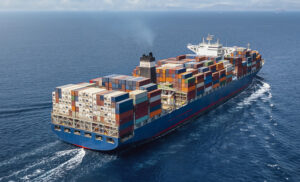![]() There are several ways that silicone rubber molding can be used to increase pilot safety and plane efficiency in the military. Its durability and flexibility make it ideal for use in gaskets, keypads, helmets and other items within the cockpit. While some materials are affected by gravity, extreme temperatures and high altitude, military silicone rubber molding can be produced to withstand the demands of flight while meeting the tight tolerances required in manufacture. As the technology in military aircraft reaches new heights, the components needed to make them work must be more durable and more sensitive to specific atmospheric conditions than ever before.
There are several ways that silicone rubber molding can be used to increase pilot safety and plane efficiency in the military. Its durability and flexibility make it ideal for use in gaskets, keypads, helmets and other items within the cockpit. While some materials are affected by gravity, extreme temperatures and high altitude, military silicone rubber molding can be produced to withstand the demands of flight while meeting the tight tolerances required in manufacture. As the technology in military aircraft reaches new heights, the components needed to make them work must be more durable and more sensitive to specific atmospheric conditions than ever before.
Performance
The forces of gravity, called g-forces, place extreme pressure on items within the aircraft. As the pilot moves at high altitudes and speeds, some materials, like plastic and certain types of glass, can buckle or crack under stress from g-forces. When properly manufactured, custom molded rubber products not only withstand the stress, but provide valuable seals to connect and protect different components within the aircraft.
Connections
A perfect fit is critical to hold pieces together, to act as gaskets and to prevent gases and liquids from leaking and penetrating the cockpit. Following set design configurations and specifications, military silicone rubber molding is used for tubing and connective components on the doors, windshields, seats and controls. Connective parts manufactured through the liquid silicone injection molding process can take almost any form.
Illuminated Cockpit Displays
One of the qualities of silicone rubber molding is that it works well in keypad configurations. Cockpit displays and controls for everything from altitude and speed to landing gear can be monitored and adjusted using backlit rubber keypads and windows. This helps pilots see displays clearly in daytime and nighttime flight operations.
Pilot Gear
Over the years, the abilities of pilot gear have become more and more sophisticated. Protection from g-forces through special flight suits, oxygen masks, helmets and harnesses incorporates military silicone rubber molding components in the design. When specially treated, it can withstand a range of chemicals, gases, fluids and temperatures to keep the pilot safe and in a functional capacity.
GPS Navigation
Accuracy in location is an important element should a pilot be ejected from the aircraft for any reason. Many of today’s flight suits incorporate a GPS navigation system into their design. The system needs to be functional without fail when pilots need to be located and rescued. Military silicone rubber molding and keypads on GPS devices can withstand rapid altitude drops, water immersion, flames and fairly violent impacts.
As the technology for military pilots becomes more fine-tuned, the parts and components used to make them must keep pace. Silicone rubber molding continues to play an important role in the invention and manufacture of new systems for all types of aircraft.
To learn more about the considerations needed in the design of new systems and technology, consult the SiTECH Application Guide tab at the top of this page.








